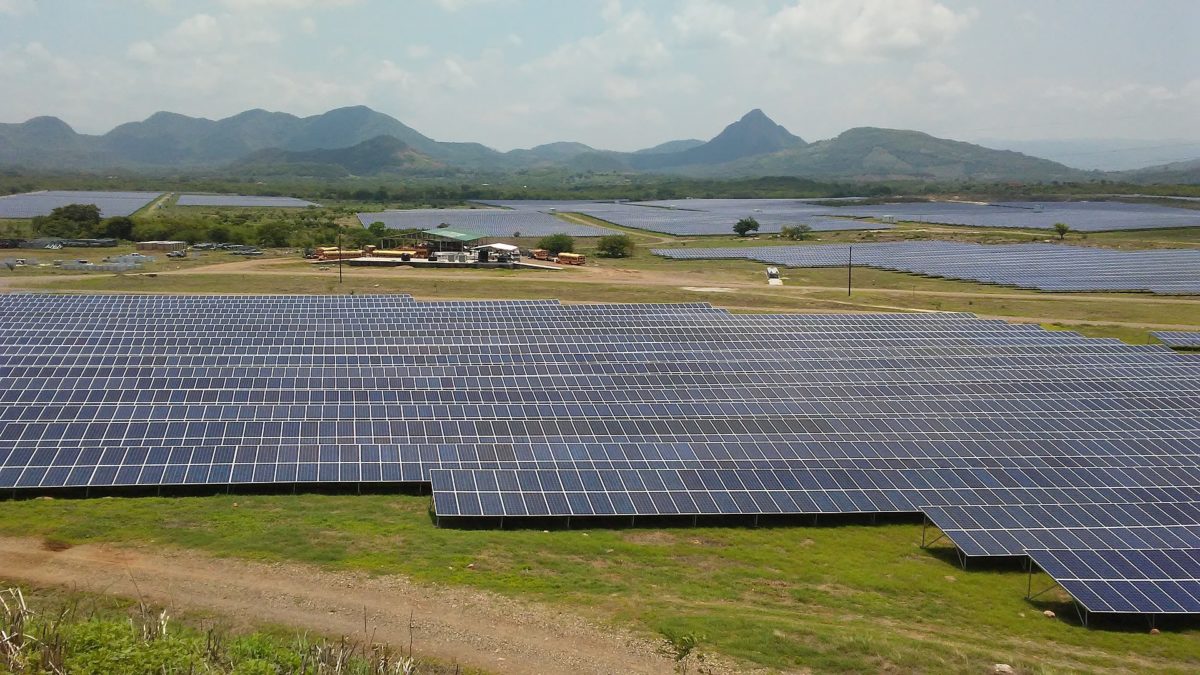From pv magazine USA.
We’re referring to the proliferation of 100 MW-plus solar projects now in development that are happening in unexpected places. These large solar projects are no longer driven by RPS edicts but by corporate buyers and the sheer competitive pricing of solar or solar-plus-storage compared to other generation sources.
***
690 MW Gemini Solar on BLM land
Nextracker CEO Dan Shugar and Congressman Paul Gosar praised the government approval process for the $1 billion Gemini solar project on BLM land outside of Las Vegas — what will be the largest solar project in the U.S. when completed — during sub-committee testimony last week.
The 690 MW facility was approved by the Trump administration earlier this year.
David Scaysbrook, managing partner of Quinbrook, the project developer, noted that this project took advantage of FAST-41, a framework “designed to improve the timeliness, predictability and transparency of the federal environmental review and authorization process,” according to the government website.
Scaysbrook said that this was not a reduced regulatory scope — “it was an initiative of the Trump administration to respond in a limited time range — a 12-month timeline. Under the old regime that could have gone six or seven years.”
315 MW Fort Bend, Texas project
Acciona acquired 100% of a 240 MWac/315 MWdc PV project within ERCOT territory near Houston in Fort Bend County, Texas, from Diode Ventures, a Black & Veatch company that develops global infrastructure.
When operational, Fort Bend will give Acciona more than 750 MW of renewable capacity in Texas.
Diode Ventures has joined with Enfinite Capital to develop the Fort Bend Solar project to a full notice to proceed (FNTP) state. Diode Ventures bought the Fort Bend Solar project from global property group and contractor Lendlease in 2018.
200 MW Elliott Solar in Indiana
The Clean Energy Infrastructure (CEI) business of Capital Dynamics plans to make a $170 million investment to build the 200 MW Elliott Solar Project in Gibson County, Indiana. Capital Dynamics, a global private asset management firm, is the largest private owner of solar facilities in the U.S. The Gibson County project is located on roughly 1,600 acres near Francisco in Center and Barton townships. Construction is anticipated to begin by early 2022 and be completed in 2023.
100 MW East Line Solar in Arizona
Construction is under way on East Line Solar, a new solar plant from Salt River Project (SRP) and sPower, a renewable energy IPP, which will bring $10 million in 25 years of tax revenue and up to 350 construction jobs to Pinal County, Arizona. It will deliver 100 MW of solar power to Intel’s Ocotillo Campus in Chandler, a large semiconductor manufacturing site.
East Line Solar received its conditional use permits in the City of Coolidge in 2019 and is expected to begin operations by the end of the year. This development is part of SRP’s Sustainable Energy Offering, a program that gives SRP commercial customers the option to power a portion of their operations with emission-free energy at an affordable price. A total of 33 companies have signed up to receive 300 MW of solar energy provided from Arizona-based solar plants, including the sPower East Line Solar facility, according to a release.
500 MW Yellow Pine in Nevada
The Bureau of Land Management released its final environmental impact statement for the Yellow Pine Solar Project on 3,000 acres of BLM-managed land 10 miles southeast of Pahrump and approximately 32 miles west of Las Vegas. “The BLM actively supports this administration’s America First Energy Plan, an ‘all of the above’ strategy which supports energy development on public lands,” said Angelita Bulletts, BLM Southern Nevada district manager.
This FEIS addresses two separate but connected applications submitted to the BLM Las Vegas field office. First, Yellow Pine Solar, LLC applied for a right-of-way on public land to construct, operate and maintain a proposed solar energy generation station with approximately 500 MW of generating capacity and ancillary facilities including battery storage, known as the Yellow Pine Solar Facility. Second, GridLiance West, LLC applied for a right of way on public land to construct, operate and maintain a GridLiance West 230 kV Trout Canyon substation and associated 230 kV transmission line. These two applications are collectively known as the Yellow Pine Solar Project.
Key issues raised during the public comment period included potential biological, cultural, tribal, soils, vegetation, hydrological, visual and recreational resource impacts, fire risk/hazard, project alternatives, project design features/mitigation and cumulative effects. The FEIS and other relevant documents are available here.
***
Here’s some of our recent coverage of utility scale solar projects in the U.S.
- The massive 1.1 GW Misae project moves to phase 2
- The best little utility scale solar roundup in Texas
- Even more Texas solar
- Innovation in solar foundations for utility scale PV
- Big solar in ERCOT and TVA
- Pennsylvania, Mississippi and Arkansas develop record-size PV projects
- Interconnection queues are loaded with gigawatts of solar and wind
If you have news or rumors about big solar or big energy storage projects, contact the editor: eric.wesoff@pv-magazine.com
This content is protected by copyright and may not be reused. If you want to cooperate with us and would like to reuse some of our content, please contact: editors@pv-magazine.com.




2 comments
By submitting this form you agree to pv magazine using your data for the purposes of publishing your comment.
Your personal data will only be disclosed or otherwise transmitted to third parties for the purposes of spam filtering or if this is necessary for technical maintenance of the website. Any other transfer to third parties will not take place unless this is justified on the basis of applicable data protection regulations or if pv magazine is legally obliged to do so.
You may revoke this consent at any time with effect for the future, in which case your personal data will be deleted immediately. Otherwise, your data will be deleted if pv magazine has processed your request or the purpose of data storage is fulfilled.
Further information on data privacy can be found in our Data Protection Policy.